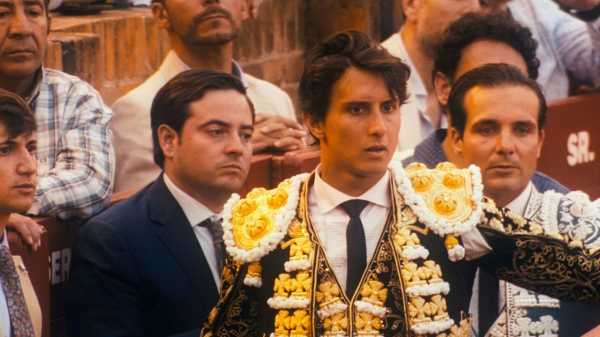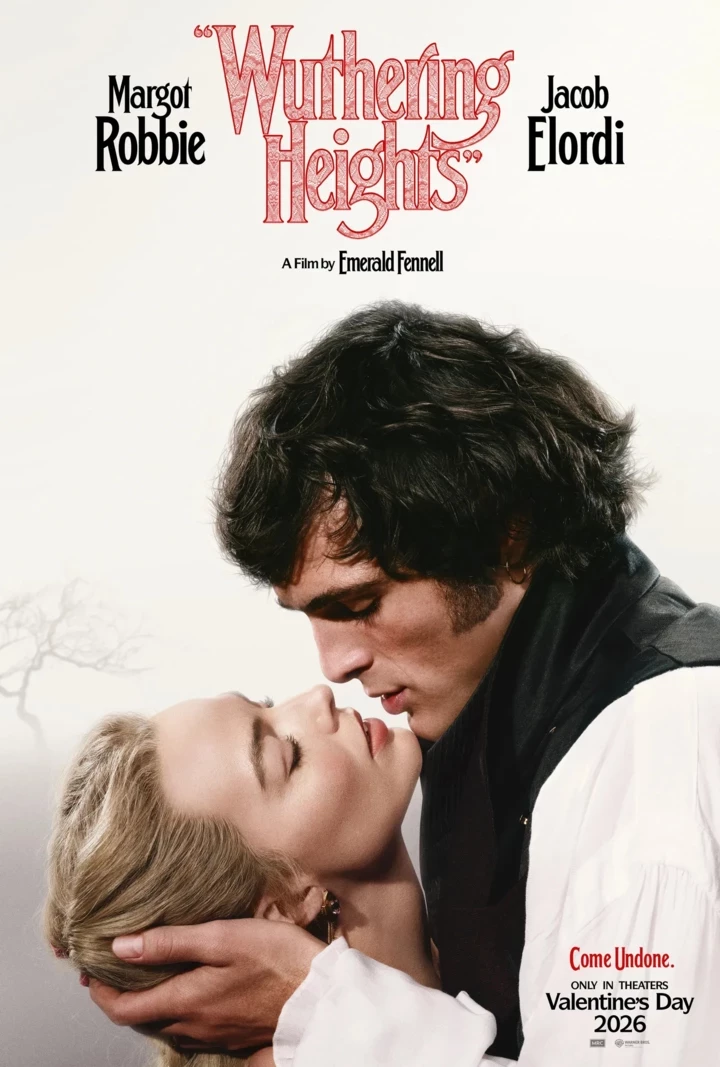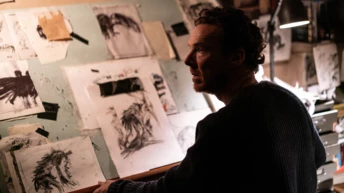
Save this storySave this storySave this storySave this story
You don’t have to like bullfighting to watch “Afternoons of Solitude” with fascination, any more than you have to like crime to enjoy a film noir. Full disclosure: I squeamishly watch horror films through my fingers and, in real life, a mere punch in the nose is terrifying to witness. I doubt I’d ever attend a corrida—but this new documentary by Albert Serra, about the bullfighter Andrés Roca Rey, is one of the most transfixing I’ve seen in a while. There’s blood, and it’s not stage blood; Roca gets hurt, and bulls are killed. Yet the effect that the movie elicits isn’t horror but glory. What makes “Afternoons of Solitude” hard to watch is its assault on assumptions: perhaps justice would be served by the abolition of bullfighting, but Serra proves that, were it to vanish, a source of radical beauty would be lost, too.
Serra’s daringly restrained approach to the subject is at the very source of the film’s disturbing emotional power. There are no talking-head interviews, no voice-overs, no superimposed text or title cards to situate the action. What’s more, there’s an extraordinary austerity to its spectrum of activity, which involves only three kinds of settings: the van in which Roca and his team of about a half-dozen men travel from venue to venue, the hotels in which Roca stays, and the rings in which he fights bulls. Roca is onscreen for nearly the entire film, yet it takes a while to see him in action, because Serra, who followed him over the course of a year and a half, makes the shrewd editorial choice of preparing viewers for a bullfight as Roca himself prepares. First, he’s seen in a van just after a bout, calmly chatting with his crew while still wearing his ornate competitive finery (known as the traje de luces, the “suit of lights”). But the apparent calm of the journey soon proves to be quietly fraught: after arriving in a hotel room, where an assistant helps remove the skintight suit, Roca is still bleeding from an unhealed wound. At every turn, “Afternoons of Solitude” is a drama of blood.
Once Roca is in the ring, Serra’s method turns rigorously and prudently observational. The director and his camera operators (he mostly shoots using three cameras) are usually somewhere in the audience alongside ordinary ticket holders (and occasionally on platforms used for TV broadcasts), and Roca is mainly filmed from afar, with zoom lenses that paradoxically show him and the bulls in extreme detail while nonetheless evoking extreme distance from the action. Nothing in the movie suggests that the operators themselves are in the ring and physically dodging danger. The images have a poise, a calm, a precision that, from the contemplative safety of the stands, is all the more passionately attentive to the danger that Roca, his team, and, for that matter, the bulls confront. The takes often run very long; the resulting continuities of space and time unfold the choreographic splendor of the bullfighter’s work and convey a harrowing sense of no exit from the field of battle.
The first corrida in the film condenses its many segments into a bravura sequence of a dozen minutes: both an overview of the usual order of business and a selection of prime moments from a theatre of death. First, Roca calls, taunts, and dodges the bull as a picador lances its back; the wounded bull leaves blood on the horse’s protective blanket and the rider’s metal footbox. A banderillero enters the ring on foot and runs daringly close to the bull, planting barbed sticks in its shoulder before deftly dashing away. Then, with the bull bleeding and weakened, Roca bears his sword beneath his cape and executes close passes, turning his back on the animal, wiggling his hips, shaking his head cockily, and goading it with a cry of “Toro, toro!,” only to be knocked flat and nearly trampled by the enraged beast. Spoiler: Roca gets up, shakes it off, and, to the audience’s rhythmic chants of “To-re-ro, to-re-ro!,” returns to the fray. Moments later, after asking an associate in the stands,“You think we shut their mouths?,” Roca returns to take on another bull.
The soundtrack adds to the sense of haunted drama: members of Roca’s team wear tiny radio microphones, picking up their voices—whether discourse or cries—and that of the bullfighter himself, who refused to wear a mike, and who battles to the rise and fall of the crowd’s gasps and cheers. The language with which his entourage exhorts him has a Hemingwayesque quality of terse grandiloquence: one calls out to Roca that he’s on “the front lines of the soul.” (The dialogue also reaches a bit lower on the philosophical scale, with its frequent testicular references—“Life is nothing, you’ve got balls”—and similarly macho exclamations, as when a team member tells Roca, “Go kick ass, maestro, go with the greats.”)
The effect is practically martial. Roca is a man at war, and even when he wins, he sort of loses. In one bout, he’s first flipped to the ground and prodded by the bull, then slammed into the ringside boards, only barely spared a horrific goring by getting pounded by the bull’s head mainly between the horns. Roca—with his pants torn and blood showing through—returns to fight and ultimately brings the bull down with one fierce thrust, leaving the sword in its back. An angry and relieved teammate taunts the vanquished animal, “Go join your fucking mother cow.” Roca’s response, however, is nearly a eulogy: “Bull, you spared me.” Serra is respectful, too. The camera operators catch the animals in full and furious closeups, and they pay dignified attention to bulls’ death agonies, their thrusts and their tremors, their gazes misting over, their eyes rolling back in their heads—and to the banal last rites of the corpses, chained to the horses that drag them off.
Roca’s maneuvers have both a theatrical elegance and a fearsome daring; his bravado is refined by his bravery, his defiant gaze challenging not just the bull but death itself. His teammates wax philosophical to extoll his achievements—“You can’t get more purity in bullfighting”; “You fought that first bull so truthfully”—and their intuitions of truth and purity inhabit the movie’s aesthetic as well. Though the making of “Afternoons of Solitude” involved the uncertainty and surprise that are intrinsic to documentary filmmaking (Serra estimates that he shot between six hundred and seven hundred hours of footage, for a feature that runs two hours and five minutes), the movie’s tightly controlled range of images is akin to tautly understated prose. Each bullfight has a similar order of activity, and Serra films them all similarly, too, but the subtle variations in weather and mood, angle and framing, the shifts between full-body shots and closeups, strike enormous differences in affect—and those differences are differences of contrast and comparison, the work of keen-eyed editing (which Serra and the cinematographer, Artur Tort, did together).
The film’s few anecdotal elements—as when a squire ritualistically but strenuously dresses Roca, lifting him by the waistband and tightening the fit as if to leave bulls no loose fabric to catch by the horn—cast the bullfighter’s entire existence in the shadow of danger and death. The movie includes nothing about the economics, the business, or the politics of bullfighting. The raising and readying of bulls is clearly expensive, as are the competitors’ finery and the administrative infrastructure of the sport. Yet “Afternoons of Solitude” offers no sidebars and no backstory to show or tell of the obviously elaborate training that Roca has undergone or how he entered the field, nothing about any rehearsals or dry runs or managerial preparations that he and his team might engage in. The film is a rarefied exaltation of bullfighting as an inherently but latently cinematic domain that’s been waiting for its closeup—and which reveals its essence only by way of the special powers of the cinema.
In this regard, “Afternoons of Solitude” is consistent with Serra’s remarkable career, which is itself a risky field of self-imposed challenges. He’s forty-nine and made his first feature in 2003; his oeuvre has included such distinctive films as “Honor de Cavalleria” (a refracted version of “Don Quixote”) and “Story of My Death” (a drama that brings together the real life of Casanova and a fictional one of Count Dracula). Serra is essentially a formalist in drama, by his choices of subject, which are matched by his conceptual approach to visual compositions. His films reflect tension between extremes of physicality and of abstraction, between stories of a potentially grotesque carnality and images of rigorous design. The balance is hard to strike. Some of his films are insufficiently grounded in drama; others undercut ample drama with effortful direction. In “Afternoons of Solitude,” with its blend of intimacy and majesty, of breathless action and overarching monumentality, he achieves a unity, a synthesis, and a far-reaching vision that he has only occasionally found in fiction. My thumbnail definition of tragedy is when truth, beauty, and justice are in conflict. Though “Afternoons of Solitude” shows only the present tense of bullfighting, it looks deep into history and spotlights the tragic contradictions of modern life itself. ♦
Sourse: newyorker.com







